Hi! I am YUKORIN, a wheelchair user. Our Accessible members conducted our wheelchair accessibility review at Kamakura which attracts a lot of domestic and overseas tourists. We were divided into groups to go around different tourist spots dotted over the Kamakura area. The outcome will be published on our website.
Kamakura Station
Kamakura is a southeast city of Kanagawa Prefecture in Japan. The city is about an hour away from Tokyo by train. My group carried out the review around Kamakura Station that has the best train access among the other areas of Kamakura. I will write a blog post on wheelchair accessibility at some sightseeing spots and wheelchair accessible restrooms around Kamakura Station.
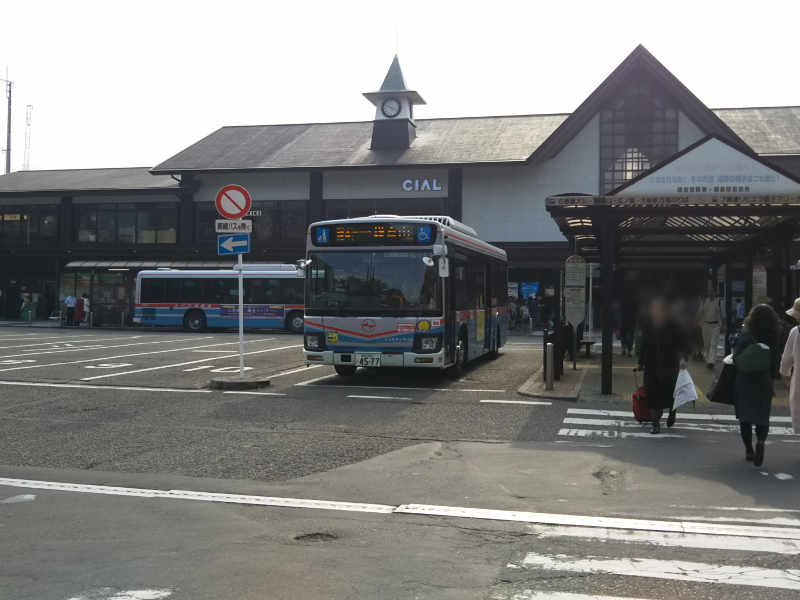
JR Kamakura Station
Kamakura Station is connected to a shopping mall named CIAL Kamakura. After arriving at Kamakura Station, I used a wheelchair accessible restroom on the 2nd floor of the shopping mall. Not only wheelchair users but other visitors also use this restroom as there are no men’s and ladies’ rooms in that building.

I’m waiting in front of the occupied restroom.
The wheelchair accessible restroom is clean and well-equipped.

The wheelchair accessible restroom at CIAL Kamakura
Komachi-dori Street
Getting out of Kamakura Station, we headed for the Tsurugaoka Hachimangu Shrine. On the way, we enjoyed walking along the Komachi-dori Street. There are many nice confectionery shops, restaurants, cafes, knickknack shops and souvenir shops on both sides of the street.

The Komachi-dori Street
The street is so narrow and crowded that wheelchair users might want to be careful about bumping into others.

A crowd at the Komachi-dori Street
Many shops have one step at the entrance. They are small too. I hesitated to enter those shops on a wheelchair. I wished I had entered some stylish shops.
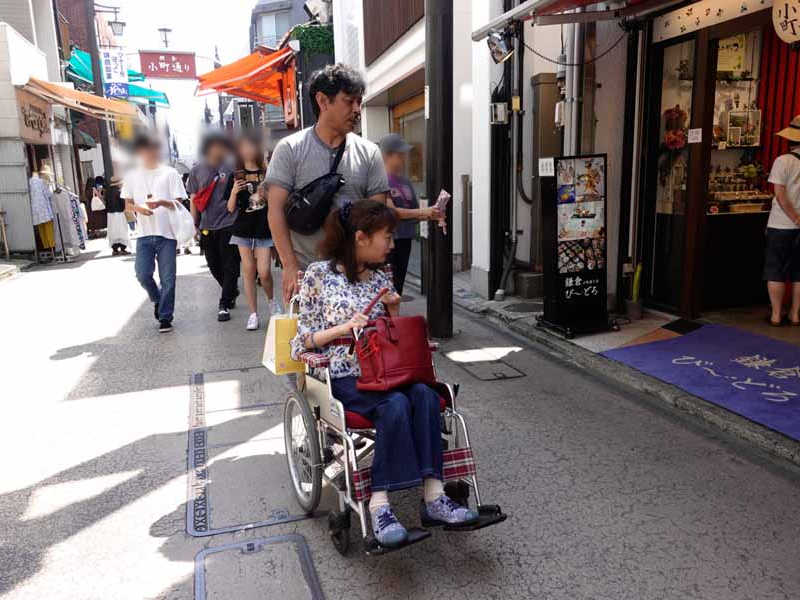
Oh dear, a step.
Some shops and restaurants have also stairs at the entrance.

Stairs at a restaurant entrance
One of the Kamakura’s popular souvenirs is the Hato Sablé or dove shaped shortbread. We went to the main store of Toshimaya selling it. No steps at the entrance. Good!
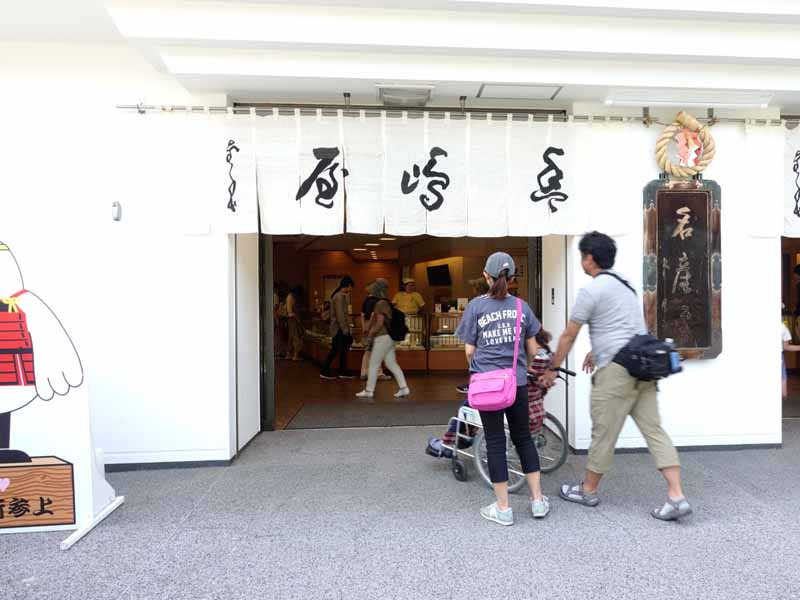
The main store of Toshimaya
The store is spacious. I enjoyed shopping in a relaxed mood.
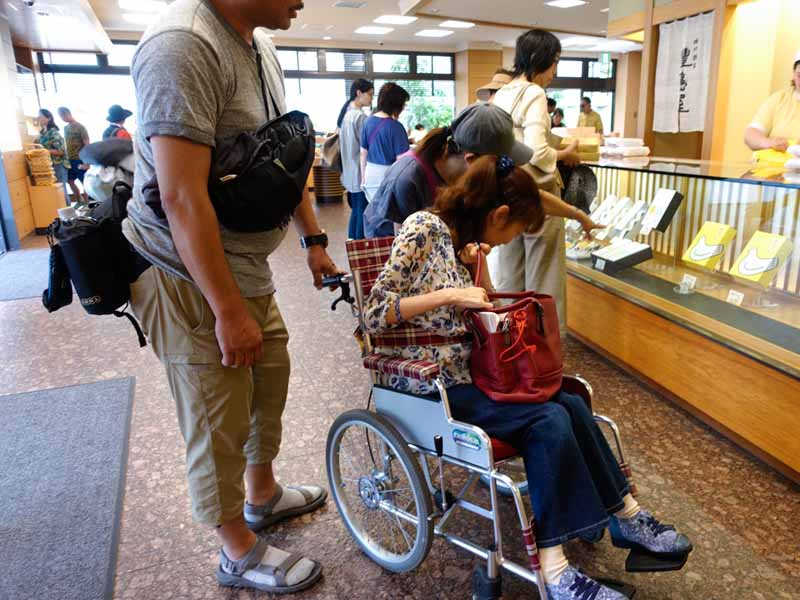
I’m debating which one to buy.
Wakamiya-oji Street
We moved from the Komachi-dori Street to the Wakamiya-oji Street. In the middle of the Wakamiya-oji Street is a sacred path named Dankazura which leads to the Tsurugaoka Hachimangu Shrine.
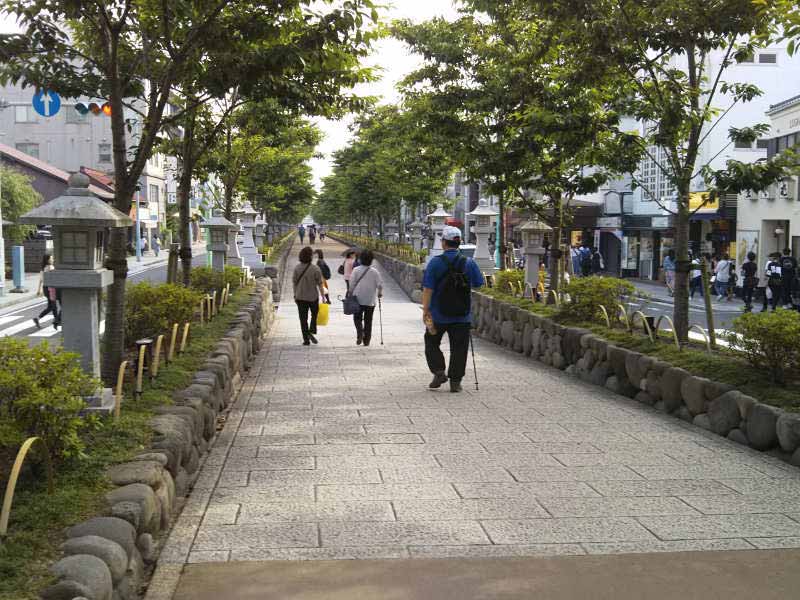
The Dankazura path
The ground level of the Dankazura path is higher than the street. However, ramps were newly installed on the path. Wheelchair accessibility has improved step by step.

One of the ramps at the Dankazura path
It was less crowded on the Wakamiya-oji Street than on the Komachi-dori Street.
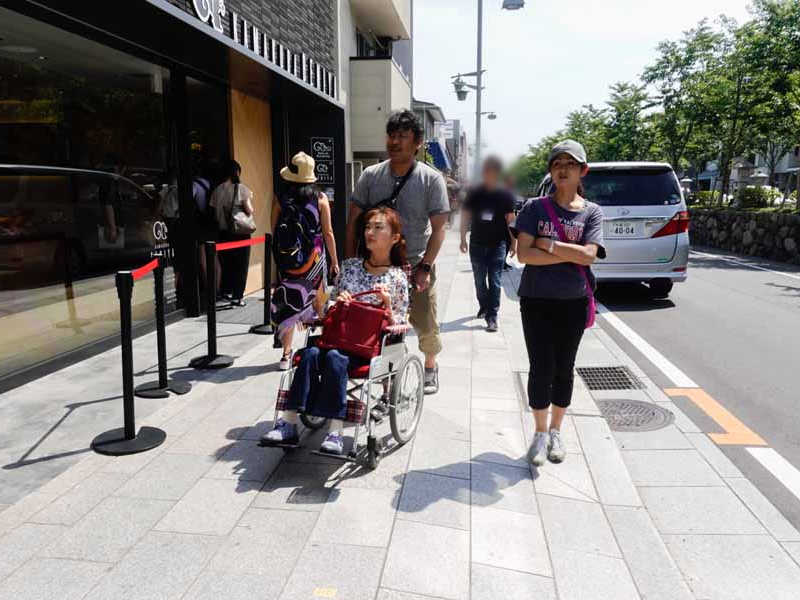
The Wakamiya-oji Street
In the street is a building named M’s ark KAMAKURA that has pay restrooms on the 2nd floor. We entered the building to check them.
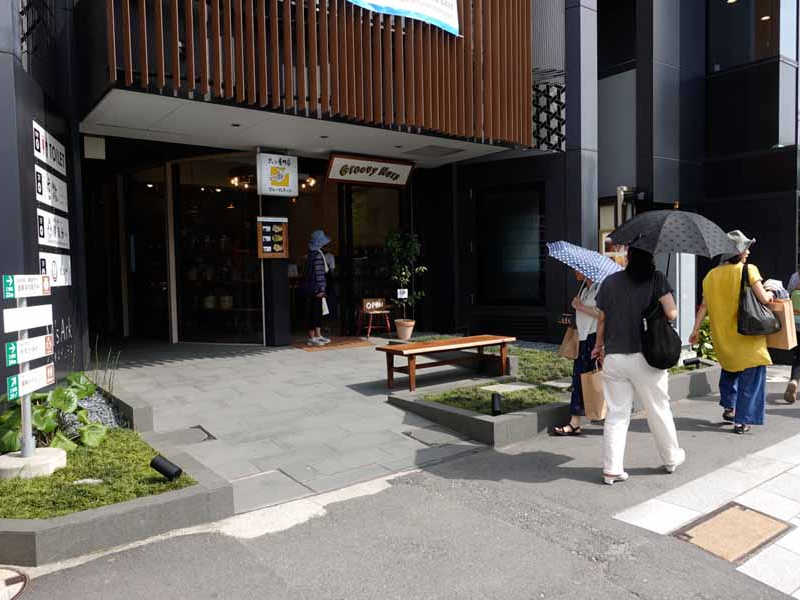
M’s ark KAMAKURA
This is the entrance of the pay restrooms. It looks like a station ticket gate. You can pass it through by paying 100 yen.
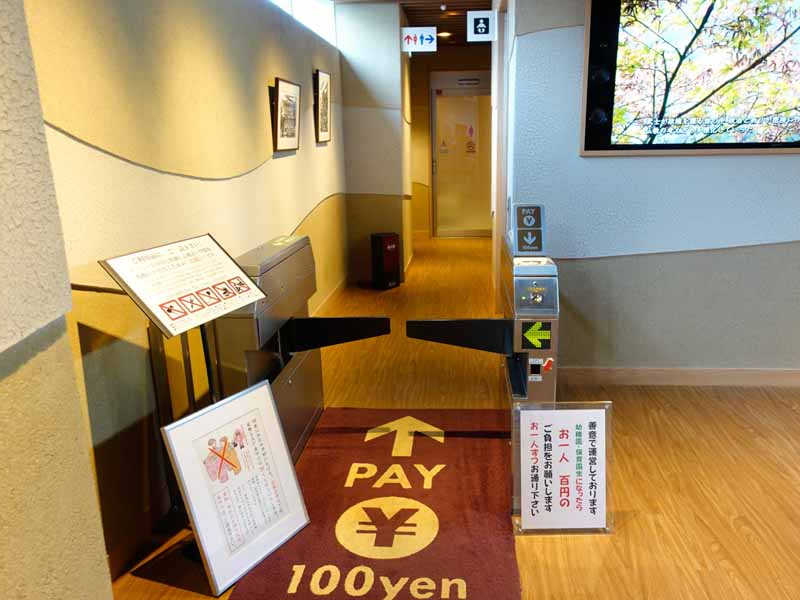
The entrance of the pay restrooms
The photo below shows a wheelchair accessible restroom. To be honest, I did not use the restroom. I mistakenly took it as a baby care room because only an exclusive baby pictogram was displayed above that door. I just passed it by and went into the ladies’ room.

The wheelchair accessible restroom at M’s ark KAMAKURA
This is the ladies’ room. A wheelchair can barely walk on the narrow corridor.

The corridor in the ladies’ room
My wheelchair could not go in the small restroom stall. No handrail is attached to the wall. I recommend wheelchair users to use the wheelchair accessible restroom. Don’t make the same mistake as I did.

The restroom stall in the ladies’ room
Tsurugaoka Hachimangu Shrine
We found a red torii gate soon after leaving M’s ark KAMAKURA. We arrived at the Tsurugaoka Hachimangu Shrine. If you go directly to the shrine from Kamakura Station, it is about a ten-minute walk.
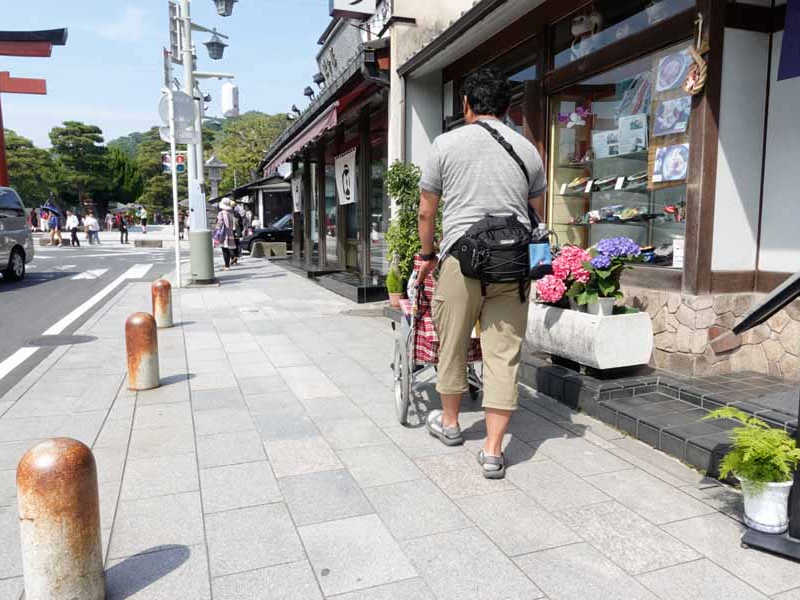
Our arrival at the Tsurugaoka Hachimangu Shrine
The Tsurugaoka Hachimangu Shrine owes its origins to Minamoto no Yoritomo who was the first Shogun of the Kamakura period. Nowadays Kamakura is a world known city for its historical sites and this shrine is the major attraction for many domestic and overseas tourists. By the way, the photo below shows the Main Shrine called Hongu at the top of the long stone stairs. It is impossible for wheelchair users to climb up to the Main Shine. I was concerned about which part would be wheelchair accessible although the precincts are very large.
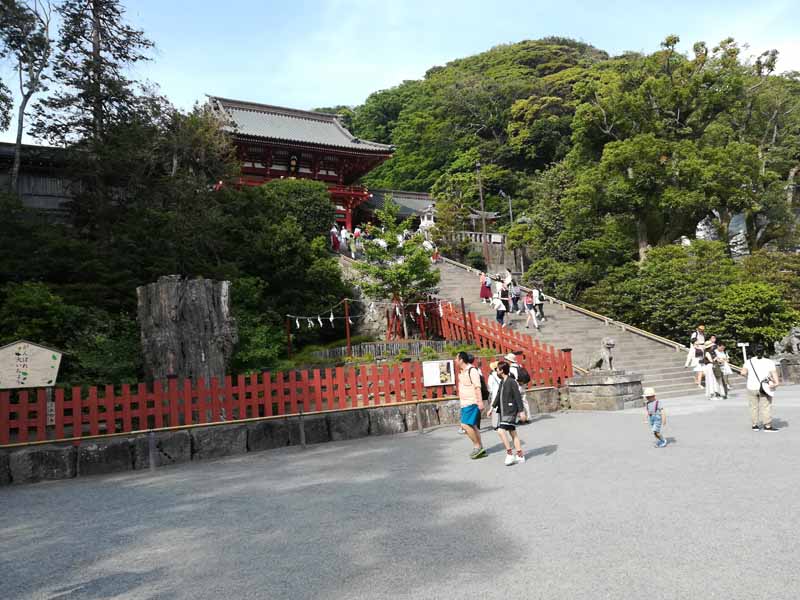
The Tsurugaoka Hachimangu Shrine
I stepped into the precincts when I noticed a low step at the edge of the ramp on the gateway.
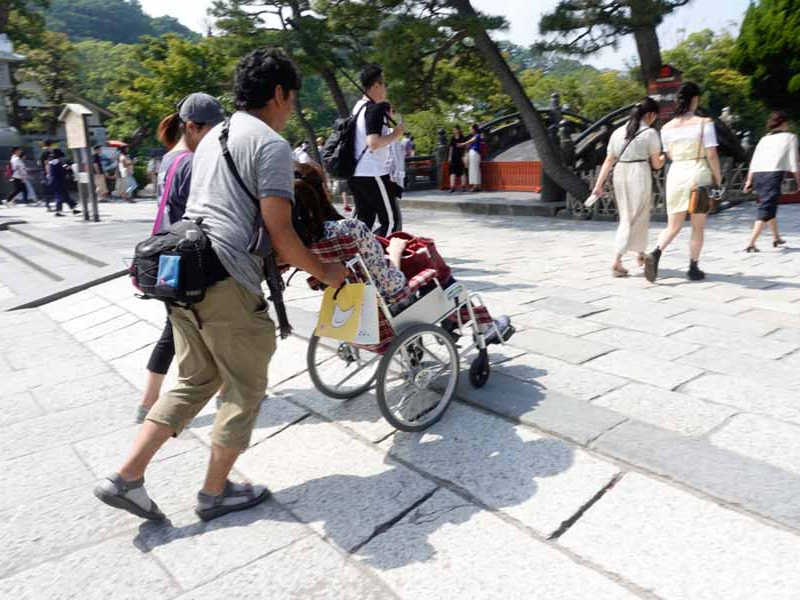
The ramp at the precincts’ entrance
The center of the front gravel path is paved with stone.
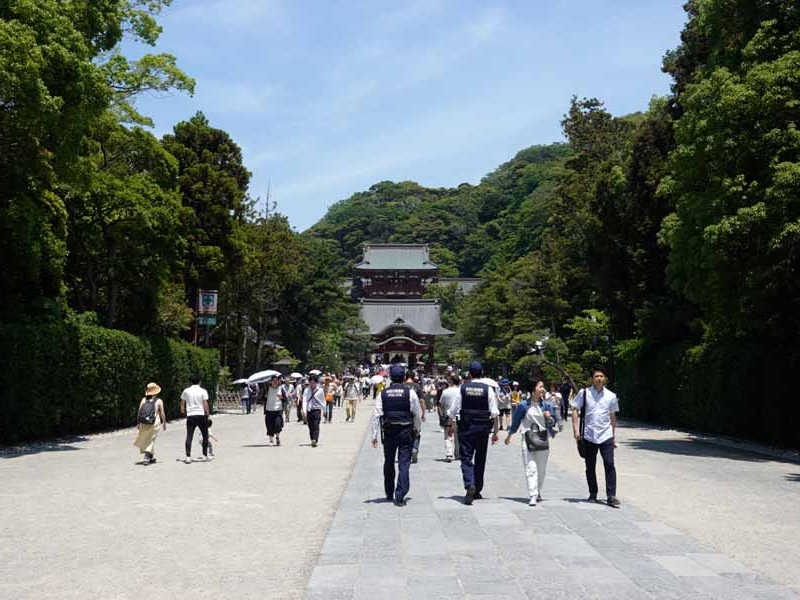
The front path
I tried to walk along the stone path when I unexpectedly felt uncomfortable finding it bumpy.

I’m walking along the stone path.
Then I moved to the gravel path when I felt rather comfortable taking a smooth walk since the gravel was just scattered over the ground.
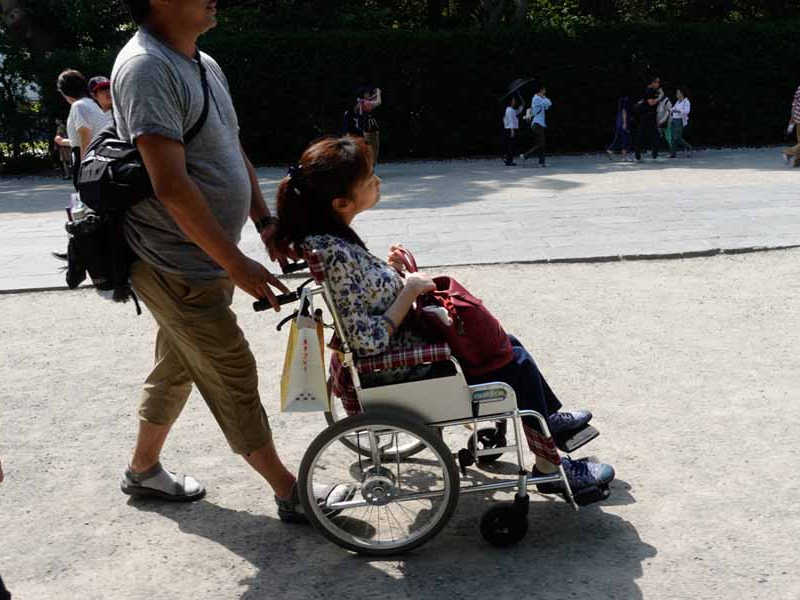
I’m walking on the gravel path.
As I went forward, however, the amount of the gravel increased. The speed of my wheelchair slowed down with my wheelchair tires buried in the thick gravel.

The amount of the gravel increased.
We turned left on the path and found a wheelchair accessible restroom.
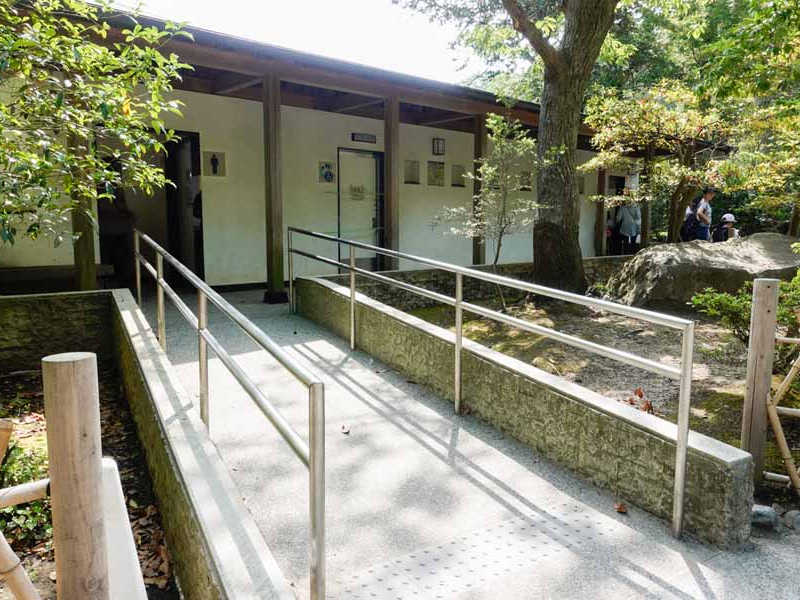
A ramp to the wheelchair accessible restroom
But this restroom was under reconstruction. We could not go inside and see its equipment.
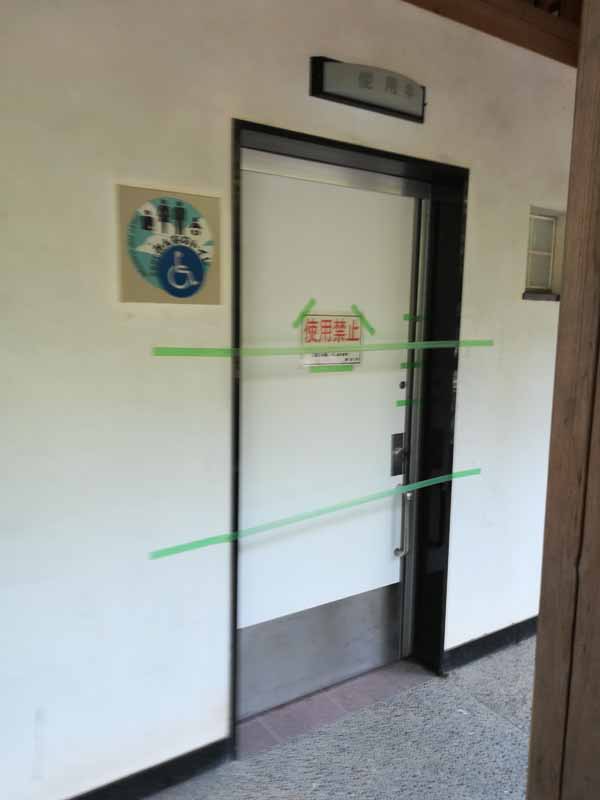
A “No Entry” sign was put on the door.
I put a photo of a ladies’ room instead. You can see a handrail on the wall.
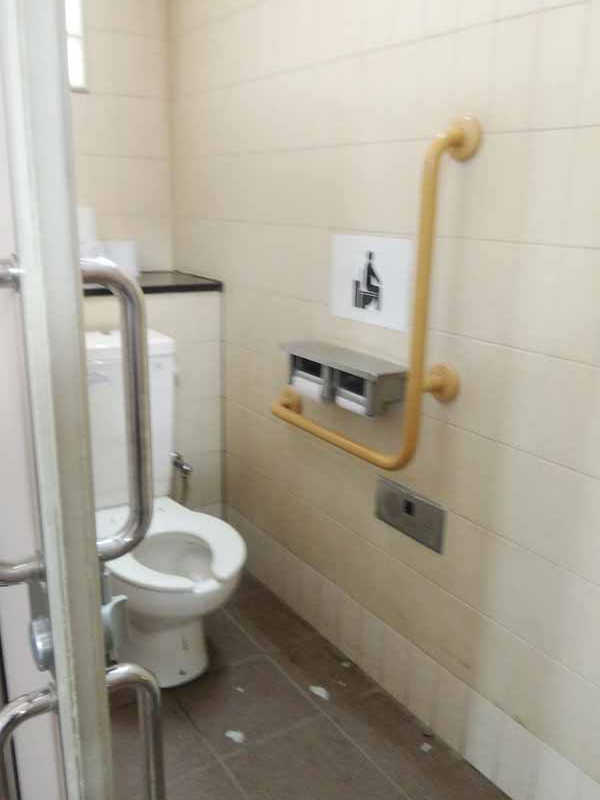
The ladies’ room in the Tsurugaoka Hachimangu Shrine
I got back to the front path paved with stone.

I walked on the stone path again.
here is a ramp in front of the Lower Worship Hall called Maiden. Wheelchair users can surely have access to the worship hall although we could not take photos of the hall because of a crowd.
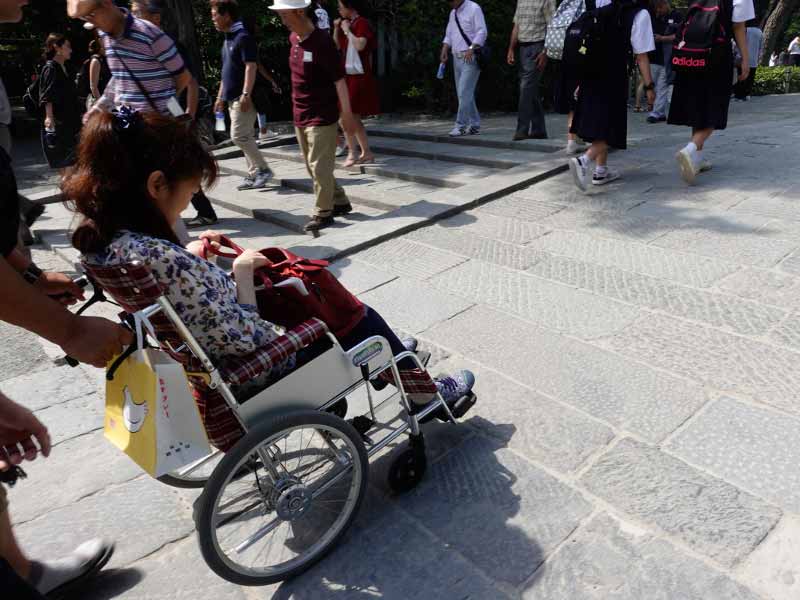
The ramp in front of the Lower Worship Hall
We turned around at the worship hall and turned left on the front path. Then we found ourselves walking on the path in front of the shrine office. I was able to walk smoothly on the path although we didn’t reach the torii gate at the far end.

The path in front of the information center
We turned right on this path and found a nice place we could admire the view of the Genpei-ike Pond. The surface of the pond was filled with lotus leaves.

I enjoyed the view of the Genpei-ike Pond.
The scenery of the green lotus leaves gave me great pleasure. I was pretty happy to go there.
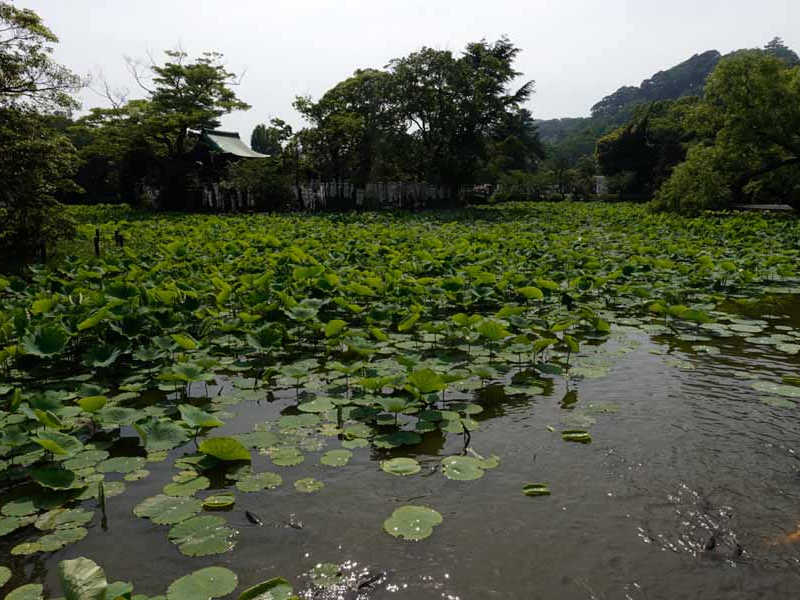
The lotus leaves on the pond
Leaving the Tsurugaoka Hachimangu Shrine, we visited the Kamakura-bori Sculpture Museum located along the Wakamiya-oji Street. Please forgive me for just putting a photo of the admission ticket as photography is not allowed inside. This museum is located in the Kamakura-bori Assembly Hall. However, there are several stairs at the hall entrance and also a few steps on the 1st floor. Consequently I don’t recommend the museum to wheelchair users. In my case, our members and hall staff lifted my wheelchair to enter. It is not impossible to enter the museum if a wheelchair user would really like to watch Kamakura-bori sculptures and some people help them take the stairs and steps.

The museum ticket
We lastly dropped by the Tokyu Store Kamakura near Kamakura Station and took a look at a wheelchair accessible restroom on the 5th floor. It is a spacious restroom with different equipment although it is not equipped for ostomates.

The wheelchair accessible restroom at the Tokyu Store Kamakura
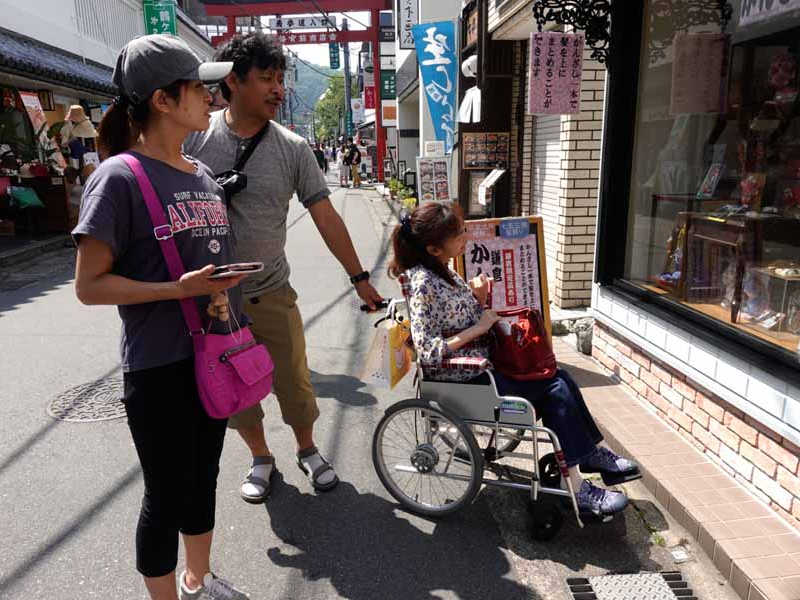
We enjoy window shopping.
Kamakura is called small Kyoto. There are many beautiful shrines and shops with fine Japanese taste. I like Kamakura very much. It is a historical city full of old buildings and it would still take a while to realize perfect wheelchair accessibility including installation of ramps and elevators at all the sightseeing spots. It might be challenging for wheelchair users to travel around Kamakura. But the city is worth visiting even if they just enjoy the sophisticated atmosphere. If more wheelchair users were to visit Kamakura, the wheelchair accessibility would gradually improve. In fact, the ramps were newly installed on the Dankazura path. I believe that if Kamakura would become a friendlier city for people with disabilities, it will become a more attractive and popular spot for a large number of tourists from domestic and overseas countries.

